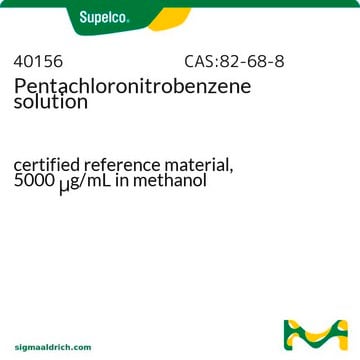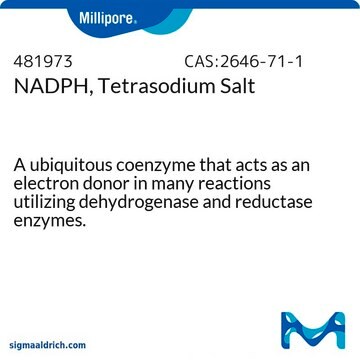P8556
Pentachloronitrobenzene
suitable for plant cell culture, BioReagent, ≥94% (GC), powder
Synonyme(s) :
PCNB, Quintozène
About This Item
Produits recommandés
Gamme de produits
BioReagent
Pureté
≥94% (GC)
Forme
crystalline powder
powder
Technique(s)
cell culture | plant: suitable
Pf
140-143 °C (lit.)
Solubilité
toluene: 50 mg/mL, clear, faintly to slightly yellow
Densité
1.718 g/cm3 at 25 °C
Spectre d'activité de l'antibiotique
fungi
Application(s)
agriculture
Mode d’action
DNA synthesis | interferes
Chaîne SMILES
[O-][N+](=O)c1c(Cl)c(Cl)c(Cl)c(Cl)c1Cl
InChI
1S/C6Cl5NO2/c7-1-2(8)4(10)6(12(13)14)5(11)3(1)9
Clé InChI
LKPLKUMXSAEKID-UHFFFAOYSA-N
Vous recherchez des produits similaires ? Visite Guide de comparaison des produits
Application
Autres remarques
Mention d'avertissement
Warning
Mentions de danger
Conseils de prudence
Classification des risques
Acute Tox. 4 Oral - Aquatic Acute 1 - Aquatic Chronic 1 - Skin Sens. 1
Code de la classe de stockage
11 - Combustible Solids
Classe de danger pour l'eau (WGK)
WGK 2
Équipement de protection individuelle
dust mask type N95 (US), Eyeshields, Faceshields, Gloves
Certificats d'analyse (COA)
Recherchez un Certificats d'analyse (COA) en saisissant le numéro de lot du produit. Les numéros de lot figurent sur l'étiquette du produit après les mots "Lot" ou "Batch".
Déjà en possession de ce produit ?
Retrouvez la documentation relative aux produits que vous avez récemment achetés dans la Bibliothèque de documents.
Les clients ont également consulté
Articles
Prevent fungal, yeast, and mold contamination in cell cultures. Discover the best antifungal agent for your cultures with the extensive Sigma® antifungal collection.
Notre équipe de scientifiques dispose d'une expérience dans tous les secteurs de la recherche, notamment en sciences de la vie, science des matériaux, synthèse chimique, chromatographie, analyse et dans de nombreux autres domaines..
Contacter notre Service technique














